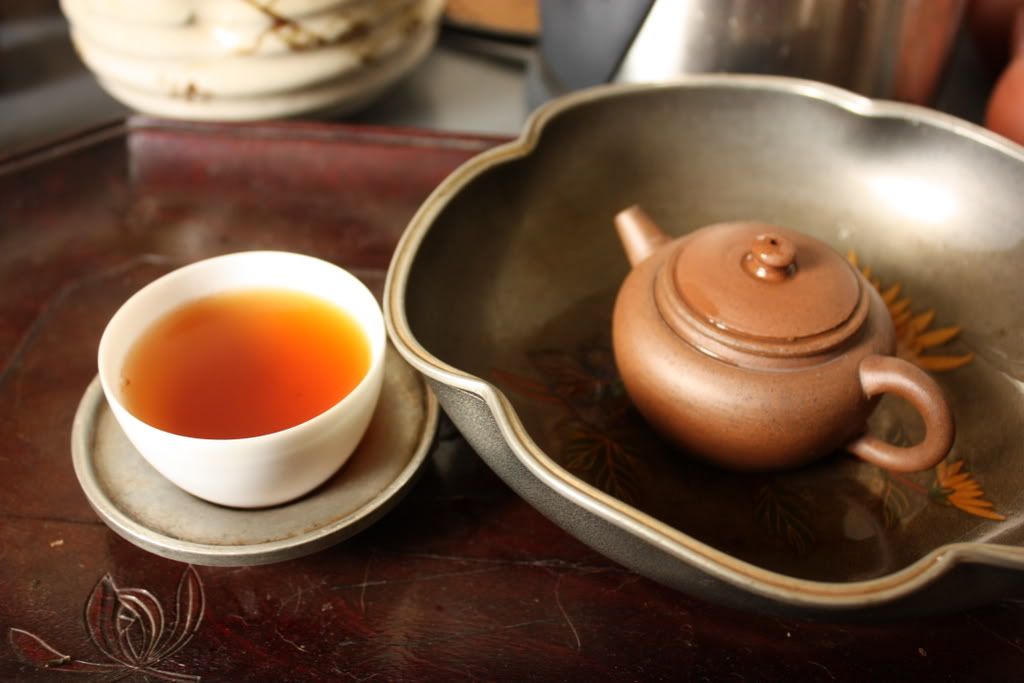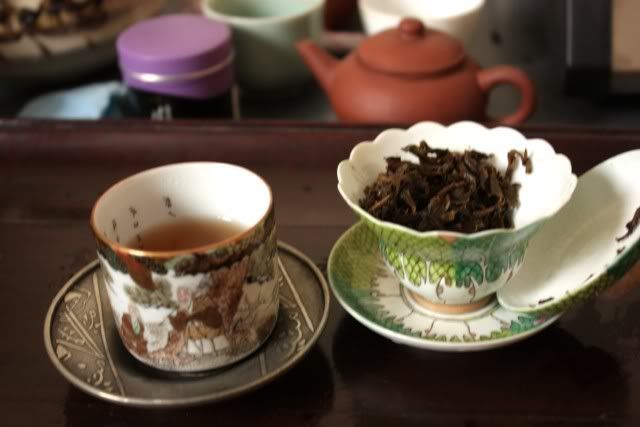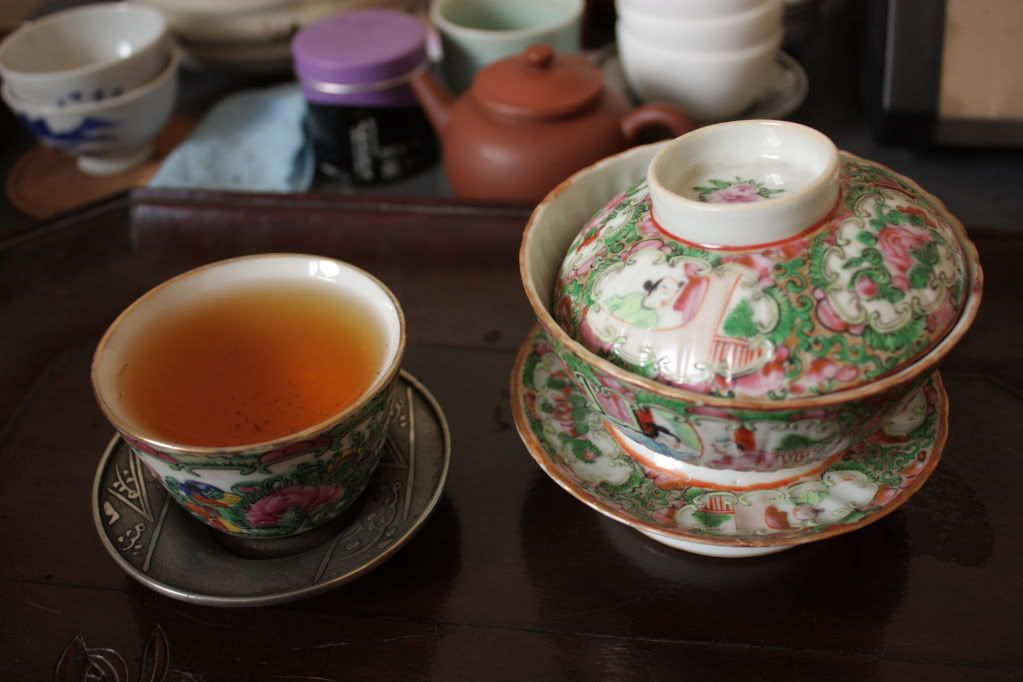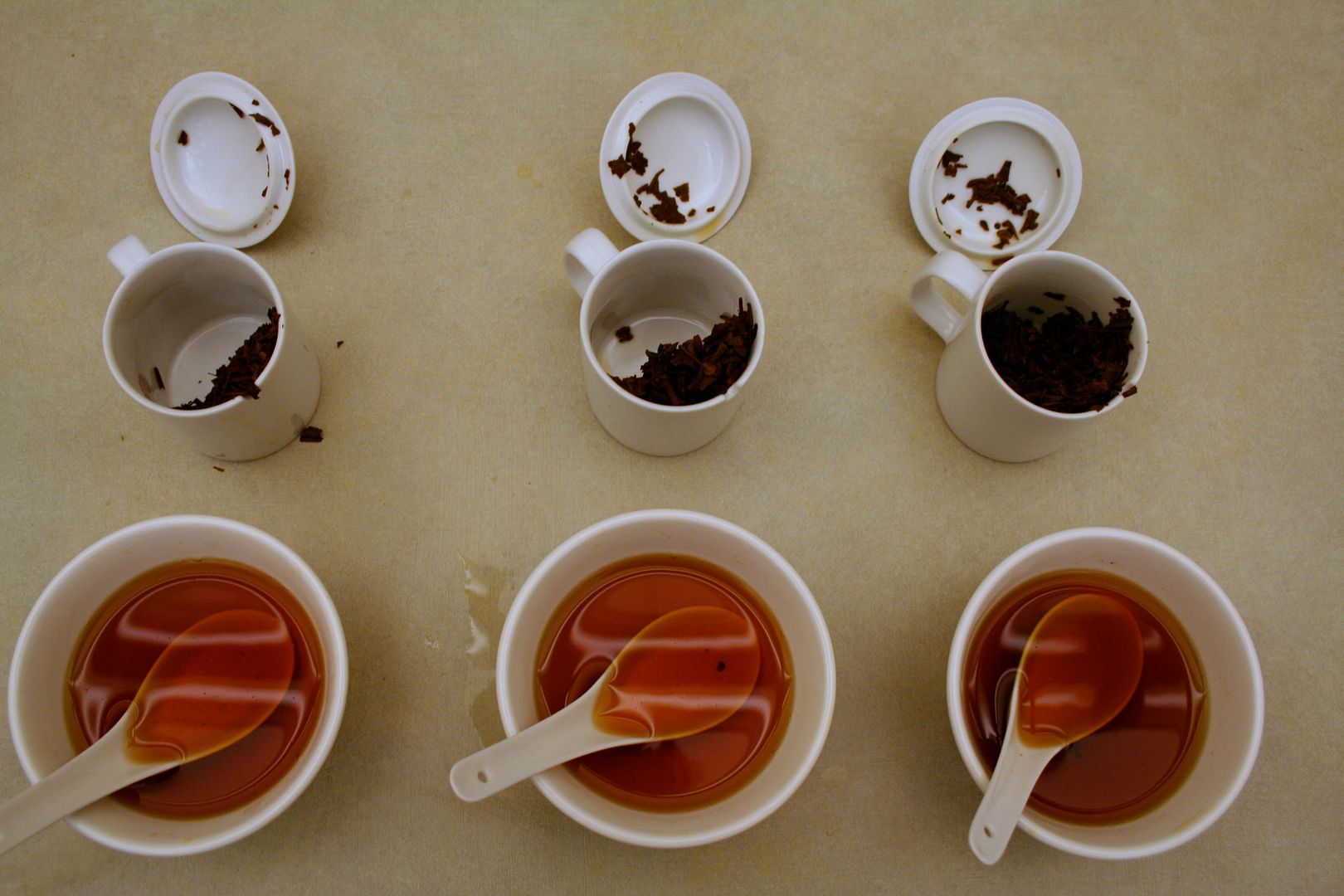or not to blend? That is the question.
Lots of people have discussed this before, and a long, long time ago, I think I said something about it too, although it’s been so long that it might as well not exist. The thing here is mostly concerning puerh — whether or not these single mountain teas are really such a good idea.
We all know that traditionally, teas were blended. I have seen evidence from the nineteenth century that clearly state how cakes produced in Yunnan were blended with different leaves, and it seems to be for commercial reasons too — nice leaves on the outside, bigger leaves on the inside. This is very much like the blending that takes place at factories like Menghai, where they also did similar things. There were specific formulas that they used to create these blends, and if you look at a proper 7542 you will see that the front surface of the cake has leaves that look different than the ones on the back, and if you cut it open, you’ll find that the leaves inside are, once again, different.
This says something not only about the cakes themselves, but also consumption of the cakes. Traditionally, in places like Hong Kong, cakes were broken into bits, and then were again blended by the teahouse. They don’t break one cake at a time for you to savor. If they’re breaking cakes that day to prepare for business, they do it in a whole batch — dozens, if not hundreds, of cakes are broken at the same time into small chunks, bits, and loose leaves. These teahouses have their own house recipes for how to blend cakes, and will therefore create different tastes according to these custom blends. What you get at A Teahouse is not going to be the same as B Teahouse, and loyal customers swore by them, declaring that one was better than the other.
So that was how things used to be. Individual drinkers did not drink cakes on their own. They had it outside, in public teahouses. The concept of storing your own tea was pretty foreign. Tea was stored by those in the trade, and what you bought, you drank. Most of the older texts I’ve read say nothing at all about puerh — it’s not a tea they consumed. Instead, they all drank stuff along the coast, probably green tea of various types, or maybe some oolong mixed in it. Puerh was not on their radar.
These days, however, most of the teas we see produced are various kinds of single mountain, even single estate teas. Bulang this, Banzhang that, they are all locale specific (allegedly) and vintage specific. Of course, given the appellation problems, there’s no guarantee that what’s in the wrapper is what’s advertised, but if we take it at face value, what we have right now on the market are a bunch of year and location specific teas.
So, isn’t that just like wine? Winery, year, and varietal/region specific, right? What’s wrong with that? Or maybe we can compare them to single-malts?
I think neither of these are great comparisons. Wines are often blends, even if it’s a bottle that says “Merlot” and “Sonoma Valley” on it. 15% of the wine can be not from Sonoma Valley. It doesn’t have to be all Merlot either. For the stricter appellation regimes, such as those of French wines, you still have leeway for blends depending on the region. They often specify the allowable amount of blending, and each appellation is different. If you don’t like it and want to make something outside of what’s allowed by the AOC? There’s always Vin de Pays, a much looser set of regulations on what can go into the bottle.
Single malts also are rarely single-sourced, single year. While they do come from a single distillery, say, Lagavulin, the “16 years” on the label is really the lowest age of the whisky in the blend. Standard bottling of these whiskies are usually blends of various years, and not all from a single year. If you want those, you can go for specific vintage bottling, or single cask, or any of those things. By and large, whisky makers blend their whisky to create a fuller profile or whatever the desired taste might be.
That’s not what’s going on with puerh tea. These days, the market is filled with teas that are mostly single year and single source teas, stored, generally, in the comfort, or danger, of your own home. What I think will happen is that the taste of these cakes, many years down the road, will often be aggressive, sharp, and focuses on certain notes while completely missing others. That’s the nature, I speculate, of such single-profile teas.
Does this mean we should all just buy Menghai 7542? No, I don’t think so. Even then, you’re still going to end up with 7542 of one vintage. One of the things that the teahouses used to do when blending is to blend different ages and different types of puerh together. They might also take into account storage conditions, cost, and other factors. Someone who knew what he was doing would be responsible for deciding what to do with the blend. So, 7542 is not the answer.
Instead, I think the answer might be for us to start blending our own tea — an aged Bulang with a young Yiwu might make for a pretty interesting combination. Or, a blend of wetter stored teas with drier stored ones. I am not convinced now that drinking these single sourced teas in 20 years will be our answer to the Songpin of yore. I think we will be sorely disappointed if we wait that long. Better start learning the art of blending now.





 RSS - Posts
RSS - Posts
Interesting.... would 250C in my oven work?